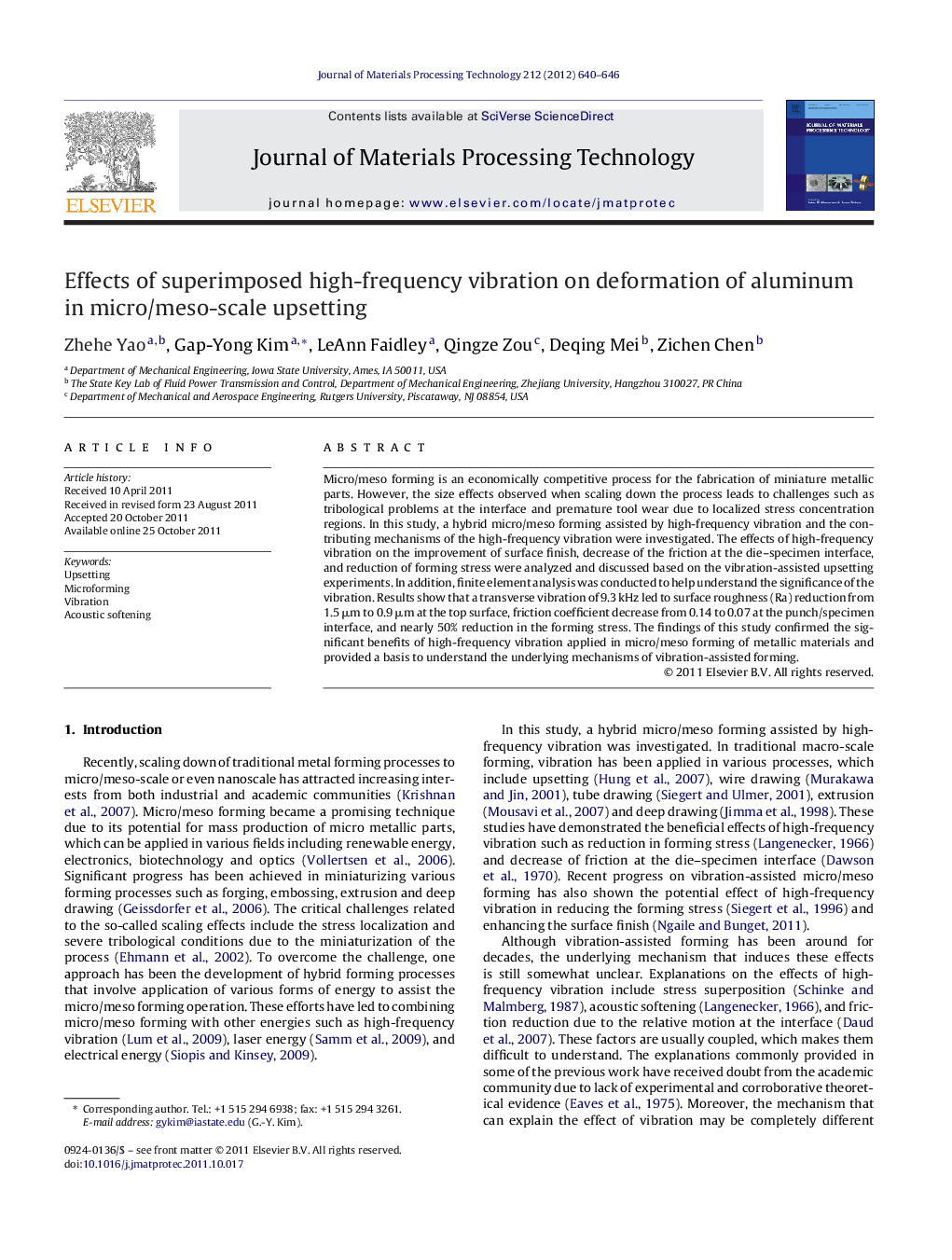| Article ID | Journal | Published Year | Pages | File Type |
|---|---|---|---|---|
| 798327 | Journal of Materials Processing Technology | 2012 | 7 Pages |
Micro/meso forming is an economically competitive process for the fabrication of miniature metallic parts. However, the size effects observed when scaling down the process leads to challenges such as tribological problems at the interface and premature tool wear due to localized stress concentration regions. In this study, a hybrid micro/meso forming assisted by high-frequency vibration and the contributing mechanisms of the high-frequency vibration were investigated. The effects of high-frequency vibration on the improvement of surface finish, decrease of the friction at the die–specimen interface, and reduction of forming stress were analyzed and discussed based on the vibration-assisted upsetting experiments. In addition, finite element analysis was conducted to help understand the significance of the vibration. Results show that a transverse vibration of 9.3 kHz led to surface roughness (Ra) reduction from 1.5 μm to 0.9 μm at the top surface, friction coefficient decrease from 0.14 to 0.07 at the punch/specimen interface, and nearly 50% reduction in the forming stress. The findings of this study confirmed the significant benefits of high-frequency vibration applied in micro/meso forming of metallic materials and provided a basis to understand the underlying mechanisms of vibration-assisted forming.
